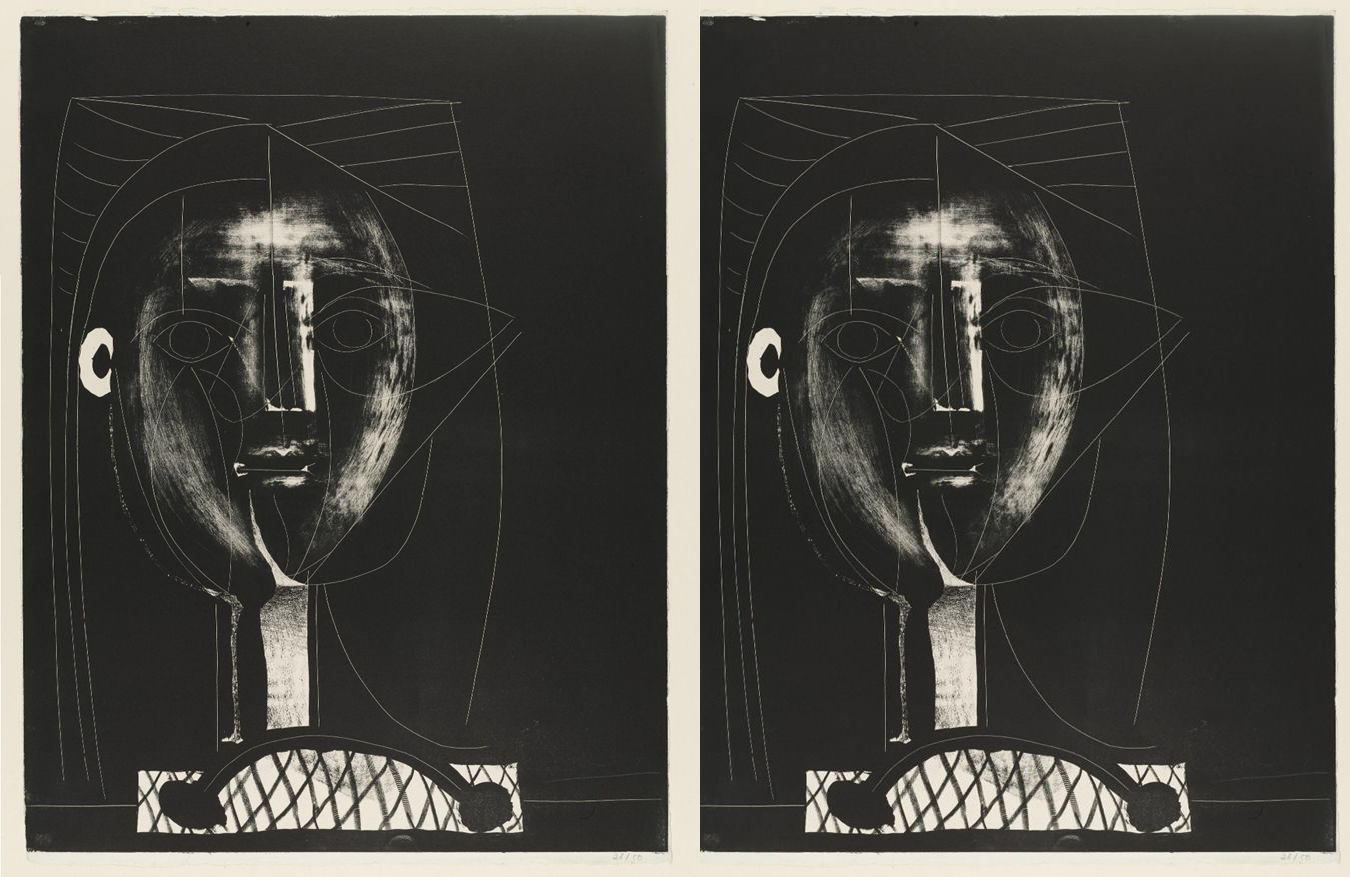This essay is part of a dossier on The Maghreb after Orientalism.
Il fut pendu l’ethnologue-espion, writes poet-novelist-anthropologist Habib Tengour, En ce temps-là nous étions un peu sauvages (1976 : 131).[1] Tengour’s sly voicing of the violent indigene consigning ethnology to the gallows asks us to rethink authority and expertise in the social sciences. Tengour was born in Mostaganem in 1947, a town he registers in rhymed Algerian Arabic as vingt-sept makla we sket, “zip code twenty-seven food and silence” (2012: 36). His father Mohamed Tengour was a member of the Parti du Peuple Algérien (PPA) and head of the Organisation secrète (OS) for the Mostaganem region, both crucial entities to the formation of the Front de Libération Nationale (FLN). Twice arrested and imprisoned for nationalist political activities, Mohamed Tengour was banished from his home region. Forced to relocate to France, he resumed activities on behalf of an independent Algeria and brought his family to Paris.[2]
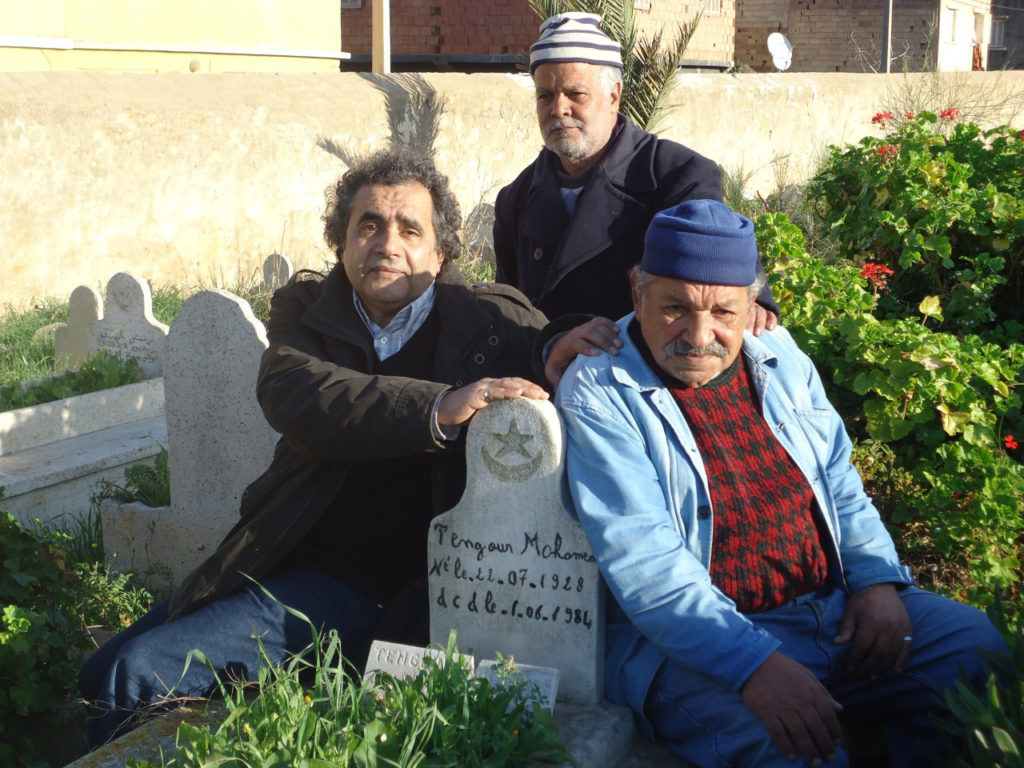
Raised and educated between Algeria and France, Habib Tengour will crisscross the Mediterranean Sea calling himself Ulysses, another consummate ethnographer whose life depends on fieldwork and literature in a quest for a restoration to homeland and identity (Yelles 2012): “My name is Ulysses I am 22 years old and I am doing sociology because I failed law” (Je m’appelle ULYSSE j’ai vingt-deux ans je fais de la sociologie parce que j’ai echoué en Droit) (9). He returns to Algeria in 1972 to complete military service, then becomes director of the newly established Institute of Social Sciences at the University of Constantine. He resigns in 1975 in opposition to proliferating provincial university graduate programs created in the absence of trained social sciences professors, each new one producing “a parody of Lin Biao! Encircling the cities by the countryside. That’s a little how the University of Algiers was gradually encircled by provincial universities” (1995: 71-72).
A year before Tengour’s homecoming, Mohammed Seddik Benyahia, a member of Algeria’s first provisional government and minister of higher education and research from 1971-77, declares that ethnologie, “contaminated by colonialism,” must be “submitted to a process of decolonization.”[3] A forerunner document to Benyahia’s call was the Tripoli Plan of 1962 elaborated by the National Council of the Algerian Revolution (CNRA) on the eve of independence. Dismantling former European settler colonial structures called for more appropriate post-independence measures of redress and reconstruction than ethnology imparts:
French colonialists undertook, by war, extermination, looting and confiscation, to systematically destroy the Algerian nation and society. More than a mere colonial conquest to ensure control of the country’s natural wealth, this enterprise sought, by all means, to substitute foreign settlement for the autochthonous people. (Colonna 1972: 260)
The French conquests of Algeria in 1830, Tunisia in 1881, and Morocco in 1912 also resulted in France establishing journals, institutes, scholarly organizations and universities instigated by metropolitan exigencies over its overseas colonies. France was the preeminent social scientific model for the Maghreb and the Maghreb contributed to shaping French social sciences (Slyomovics 2013). The Commission Scientifique de l’Algérie (1839-41), modeled on Napoleon’s scientific expedition to Egypt, was created to map Algeria’s culture and geography, as were the 1904 Mission Scientifique to Morocco and the creation of the French institute in Cairo in 1909. In 1925, the Institut d’Ethnologie in Paris established by Marcel Mauss, Lucien Lévy-Bruhl, and Paul Rivet arrived on the social science scene at the apogee of close to one hundred years of research on the native following in the wake of military officers and colonial civil servants whom Bourdieu calls ethnologues spontanés, “spontaneous ethnologists” (Mammeri 1985: 8). Engaged in ethnology, folklore, and collecting on behalf of metropolitan museums, Tengour’s legions of ethnologist-spies were effective in spoliating native material and intangible cultures.
Anthropology, according to Talal Asad (who prefigured Edward Said’s critique of the West’s Orientalism), is an intellectual agent of colonialism inevitably embedded in hegemonic and imperial power relations because “the world also determines how anthropology will apprehend it” (1973: 12). And that ethnographic world of inquiry ended, dissipating the colonial regime of Francophone scientific researchers in the Maghreb enraptured by North African ethnology (Slyomovics 2014). It is not surprising, therefore, that postcolonial theory owes a debt to Maghreb-based thinkers. Among them on any list are Abdelkebir Khatibi, Albert Memmi, Abdelmalek Sayad, Paul Sebag, Abdelkader Zghal, Habib Tengour, Jacques Derrida, Pierre Bourdieu, and Frantz Fanon, all “provincializing” Europe (Chakrabarty 2000) from the Mediterranean’s North African shores.
Following Benyahia’s call to boycott ethnology, debates swirled around a post-independence anthropology inquiring, in fact, what is to be done? Would linking the identity of the indigenous social scientist to the discipline of anthropology produce more relevant, less universalizing, unbiased “Arab social science”? Or another intellectual path, should Islamic and Arab sources reanimate social theories derived from the fourteenth-century Maghrebi thinker Ibn Khaldun? (Morsy et al. 1991: 81-115). What if decolonizing the social sciences in Algeria became the means to hijack and manipulate the path of Arabization (ta’rib), thereby blocking progressive movements such as student or Berberophone rights, as Tengour suggests? (1995: 68) In contrast to tortuous attempts throughout the Arab world to reconcile nascent academic social sciences with Western Orientalist anthropology, at least on the official level, Algerian authorities said no. Ethnology was banned outright at the twenty-fourth International Conference of Sociology in Algiers in March 1974:
Ethnology fully participated in the colonial system. Created by colonialism, it accepted its presuppositions. You might even say it served as an ideology for this system. . . . Decolonization has scientific aspects. The rejection of ethnology as a discipline of study specific to developing countries is one of them. As a method and an ideology, it has developed a logic and thus it constitutes a scientific danger, an ideological screen between the social reality of third world countries and those who want to study them. (L’ethnologie a participé totalement du système colonial, dont elle est la création et dont elle a accepté les présupposés. Elle tenait même lieu à la limite d’idéologie à ce système. . . . La décolonisation a des aspects scientifiques. Le rejet d’ethnologie comme discipline d’étude propre aux pays en voie de développements en est un. . . . Comme méthode et comme idéologie elle a développé une logique et par là même elle constitue un danger scientifique, un écran idéologique entre la réalité sociale des pays du tiers monde et ceux qui veulent les étudier. (Mammeri 1989 : 18))
A Detour
It is worth recalling that one of the largest colonial resettlement programs occurred in wartime Algeria (1954-62), merely a dozen years before Benyahia spoke out. To dismantle peasant support for independence fighters, approximately one quarter of the indigenous rural population was displaced. The French military process of forcible removal was overseen by the army’s Specialized Administrative Sections (Sections Administratives Spécialisées, SAS). Officers apprenticed in so-called Muslim sociology were charged with the study of villagers before and after resettlement. Social science was implicated, as early as Émile Durkheim’s The Division of Labor in Society that depicted an Algerian traditional Kabyle society frozen in premodernity: “The Hebrews remained in it [segmentary social organization] to a late date and the Kabyles never passed beyond it” (Durkheim 1997 [1893], 175-178). The French army, attentive to lessons in Durkheimian sociology on tribal solidarities, imbibed Orientalist perversions of fourteenth-century thinker Ibn Khaldun in which forced sedentarization and relocation consolidated their state power (Mamdani 2017). French Algeria’s wholesale destruction of a rural agrarian world through land dispossession was updated to align with wartime scorched earth policies, then cynically relabeled modernization. A significant portion of Algerian society endured internal exile and immiseration on a vast scale as victims of controlled experiments to discover the viability of the so-called pacification programs in regroupement camps that were never more than outdoor prisons (Omouri 2001; Henni 2018). The recurring figure of the embedded anthropologist within the military is not new. Moreover, it could be said that Benyahia was operating well within Durkheimian paradigms: in France, ethnology and sociology were intertwined, thus eerily presaging Benyahia’s judgments about ethnologie versus sociologie despite Durkheim’s attempts to distinguish sociology as meta-theorizing from ethnology’s empirical data-driven practices:
The customs, beliefs, institutions of peoples are matters too profound to be judged like this, so lightly. This is why sociology must focus its research primarily on societies that can be studied from genuine historical documents, while ethnographic information should be used only to corroborate and, to a certain extent, illuminate precedents. (Durkheim [1895] 1975, 1: 76-81)
Presciently, this Algerian post-independence rejection of ethnology, understood by Benyahia as a body of knowledge predicated on the colonizer’s description to better police the population, had been foretold by Albert Memmi. Refusal is a rite of decolonization:
We then witness a reversal of terms. Assimilation being abandoned, the colonized’s liberation must be carried out through a recovery of self and of autonomous dignity. Attempts at imitating the colonizer required self-denial; the colonizer’s rejection is the indispensable prelude to self-discovery. That accusing and annihilating image must be shaken off; oppression must be attacked boldly since it is impossible to go around it. After having been rejected for so long by the colonizer, the day has come when it is the colonized who must refuse the colonizer. . . . Henceforth, the colonizer adopts a negative approach. . . . He does without tobacco if it bears the colonialist’s stamp! These are pressure methods and economic sanctions, but they are, equally, sacrificial rites of colonization. (Memmi 1965: 172-173)
Benyahia maintained an equipoise between rejecting colonial ethnology and establishing a comprehensive pedagogical program from kindergarten to conservatory and an advanced research institute for the study and preservation of Algeria’s magnificant heritage of Arab-Andalusian music. His advocacy for “decolonizing the social sciences” along with the rise of critical reissues of colonial-era ethnography, which led to reassessing Algeria’s colonial-era anthropology, cast Bourdieu, whose Algeria writings continue to be published posthumously to this day, as a key figure. Bourdieu founded an Algerian association of research in demography, economy and sociology; he collaborated and coauthored important studies with his colleague Abdelmalek Sayad; and his military experiences in wartime Algeria for the information services of the French army and the French government statistics office in Algiers led to discussions about instrumentalizing ethnographic research. Bourdieu and Sayad’s angry depictions of French Algeria’s wartime forced dislocations resulted in a publication ban of their book, Le déracinement (The Uprooting) that lasted until after the Algerian War of Independence. They describe the pauperization of Kabyle farmers herded into “regroupment” camps by the French military, “as if the colonizer instinctively found the ethnological law in which the reorganization of the habitat, a projection of the most fundamental structures of culture, leads to a generalized transformation of the cultural system. . . . The politics of regroupment, a pathological response to the deadly crisis of the colonial system, brings to light the pathological intent that inhabits the colonial system” (Comme si le colonisateur retrouvait d’instinct la loi ethnologique qui veut que la réorganisation de l’habitat, projection des structures les plus fondamentales de la culture, entraîne une transformation généralisée du système culturel. . . . La politique de regroupement, réponse pathologique à la crise mortelle du système colonial, fait éclater au grand jour l’intention pathologique qui habitait le système colonial (Bourdieu and Sayad 1964 : 26-27)). While describing the army’s strategies to coerce, supply, and rehearse informants in camps, Bourdieu takes note of the natives, perennially under investigation, who resisted their French questioners despite an “atmosphere of police inquisition and psychological action” (Bourdieu 1963: 261). Defying the social scientist under colonialism transforms into a fixation against ethnology.
Bourdieu himself began as an ethnologist later announcing a switch to sociology. Reductively speaking, physical anthropology was “anthropologie” while empirical fieldwork research in the human sciences was “ethnologie” in France, its analogue in England “social anthropology” and “cultural anthropology” in the US. In many Anglophone academic environments, the latter two melded into “sociocultural anthropology.” Even in France, Georges Balandier, among the founders of the Centre d’études sociologiques (Center for studies in sociology) in 1946, called for more convergences (Balandier 1948; Siebaud 2006).
“The Poetic Discovery of the Real”
If the terms ethnology, sociology, folklore and anthropology are often deployed interchangeably, in turn, Tengour’s poetic discovery of the real (1985: 13) and deadpan black humor play with the overlapping homophony of the word “social.” In This Particular Tartar 2 (1997–1998), his sociologist persona is mistaken for a social worker by a Tartar stranded in Paris. The Tartar, a recurring protagonist in the Tengourian corpus, becomes the exonym for Western social science in its petty bureaucratic actualizations; he is coded the migrant perennially flooding Europe like his fierce ancestral hordes, “invaders from the East whom they called, without distinction, Tartars” (2010: 122):
The city planning bureau asked me to interview him in the context of a study on gypsies and other travelers.
This particular Tartar distrusts sociologists. I think he confuses us with social workers.
My interview was limited to brief questions/answers.
I didnʼt succeed in getting a serviceable life story out of him.
I had read up on the Tartars beforehand, to help me establish contact.
He didnʼt appreciate my empathy. (130)
Unlike long-standing Orientalist studies from anthropology, folklore and ethnology about so-called “primitive” non-European peoples, languages and customs, sociology in Algeria was considered less tainted by the colonizer’s cultural depredations (Ben Naoum 2002). Mobilized on behalf of practical socioeconomic and political orientations and marching to state-inflected parameters on proletarianization, pauperization, unemployment, and shantytowns, post-independence Algerian sociology was brought to bear on topics such as development, detribalization, migration, newly launched agricultural programs, urbanization and industrialization (Madoui 2007).
In 1985, the year Tengour obtained a French doctorate in ethnology, Algeria was in the midst of state-mandated programs ensuring university teaching in Modern Standard Arabic, MSA (al-‘arabiya al-mu‘asira), no one’s native tongue and as yet linguistically lesser in the face of Algerians’ trilingual usage of Algerian Arabic (darija), French, and Amazigh/Berber languages. More government interventions followed the ban on ethnology and mandated Arabic in university social sciences faculties. Algeria’s Minister of Higher Education Abdelhak Rafik Brerhi, following a recommendation of FLN chief Mohamed-Cherif Messadia, proposed an addendum to mandated FLN party membership for state employees. A 1985 directive added a provision that professors disrespecting the regime’s political choices were liable to court actions and lawsuits, followed by decrees not only mandating MSA’s preeminence but attempting to substitute English for French. Although research conducted within Algeria has never been isolated from Western paradigms, political sociologist Lahouari Addi concludes that because university critics of the regime like himself were either in exile or teaching outside the country, government strictures on political and linguistic allegiances became moot in the face of the brain drain of Algerian intellectuals (Addi 1991 and 2002: 71-77 and Ayoub 2000).
Likewise, ethnographic studies of the tribe were taboo in Algeria during decades of the FLN single-party state (1962-89). Although tribal values were admired, the tribe as a social institution was deemed archaic and divisive. Research on Algeria’s tribes shows that despite interventions through mass education and compulsory army service, the tribe is not in opposition to the Algerian state but remains an important sociopolitical entity, hence a worthy object of study (Hachmaoui 2012; Ben Hounet 2008; Tengour 1980: 1985). In his own way, Tengour intervenes in the debate about what is to be done with ethnology in his doctoral thesis on the Beni Zeroual tribal confederations of the Chlef plain surrounding his Mostaganem home region. His ethnological propositions move away from static social science categories about la tribu towards a complex story of doubled and parallel origins, one in which the Beni Zeroual tribe’s history counterintuitively does not reside in the powerful eponymous founding ancestor figure. Unlike Algerians in Paris whose connections to any tribal group solidarity has melted away in the world of the banlieues (housing projects on the outskirts of French cities where migrant workers were concentrated), Tengour’s hypothesis is instead that, in Algeria, this fabled past was and is sustained by the local patron saint, the marabout. As Tengour unfolds generations of tribal formations, he recounts the inevitable subdividing of the tribe (qabila) into the fraction (ferqa), then further devolving into sub-fractions, clans and extended households. For him, only the last stage exhibits genuine value in terms of economic, social, and affective kinship. This means that if the tribe exists in name through reference to their eponymous ancestor Zeroual, it does so primarily to attach descendants to imagined Arab and Arabian peninsular origins. Intervening disruptive factors in the Maghreb’s history were long-standing, fluid pre-colonial affiliations and cross-border tribal movement frozen by subsequent French colonial insistence on naming, registering and refashioning tribal structures (1985: 139-142). Such factors lead Tengour to place the tribe’s memory, history, and very soul in the hands of the non-tribal marabout. These saintly spiritual leaders, whose descendants to this day transmit the tribe’s written history orally, are uniquely able to trace origins to Arab progenitors and wandering Sufi adepts, all the while ministering to the Beni Zeroual, who are in fact not Arabs, according to Tengour, but rather Arabized Berbers (1982). Taken to its conclusion, Tengour’s thesis reconfigures the marabout as an imaginative storyteller, religious leader, and tribal ethnologist, the one who does not belong to the tribe, irrespective of the tribe as imaginary traditional system or colonially distorted institution. The marabout does so by preserving written history, thereby keeping alive publicly and orally for the tribe its own genealogy and origins. Finally, the question is not if tribal lineages are socially imagined and culturally invented, but rather who tells the tale of segmenting lineages and who listens. Writing and history, story and voice, tribe and tribal memory, storytelling and identity are structurally and productively inverted. Most of all, nothing memorable is lost in Gens de Mosta, Tengour’s hometown chronicles where his concept of cultural memory is on offer to his younger, skeptical narrator by another storyteller, Allal, the venerable mujahid, communist, and International Brigade fighter:
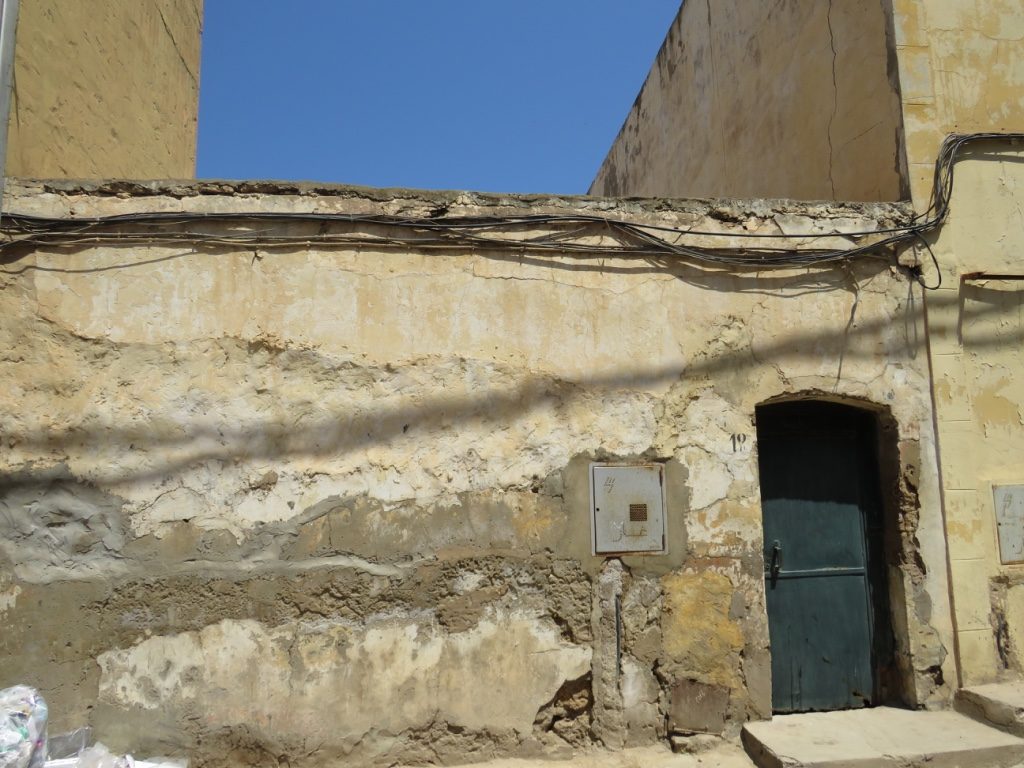
Open your ears wide and remember what you are told. And learn to tell a story … a people never forgets what’s essential to its being. No people can be fucked all the time! Memory is a very complicated thing. In fact nothing ever is really lost. Memory works in the shadows. It loves secrecy. Apparent forgetfulness is its refuge during hard times. It waits for its hour to come and while the stomach is rumbling it does not stop digging. There isn’t only what’s written down that remains. Spoken words also leave traces. (2011 [1997]: 214)
Collective embodied forms of recognition, acceptance, and transmission that are performatively enacted by the storyteller need not entirely align with official social worldviews of the Algerian nation-state, but artfully circumvent them while giving narrative pleasure to the listener.
Doubling and Exile: Both Ethnologist and Novelist
Tengour turned back to France in the early nineties to teach at the University of Evry until his retirement in 2017, believing that “there exists a divided space called the Maghreb but the Maghrebian is always elsewhere. And that’s where he makes himself come true” (2011: 262). His departure from the Algerian academy coincided with the onset of the “Black Decade” (decénnie noire) and internal strife beginning in the early 1990s. Tengour’s “elsewhere” highlights cultural hybridity and ambivalence, métissage and dichotomy, rupture and orphanhood, schizophrenia and doubles that continue to bind and underpin those who engage simultaneously in literary and ethnographic writings about the Maghreb. Such doubling and multilingual heritages are historically conjoined to displacement and exile for Algerian writers. As Maghrebi intellectuals move between the homeland and the metropole of the former colonizer, familiar tropes of splitting and separation emerge: Malek Chebel invokes “Algerian schizophrenias” (1995: 287) reminiscent of Albert Memmi who, three decades earlier, picked at the “painful discord within oneself” (le douloureux décalage d’avec soi), a cleavage that measures the self in relation to a colonizer forever deemed the model or its antithesis (1965: 140). Abdelkebir Khatibi seems to solve these conundrums of the formerly colonized writer from the Maghreb region by evoking an initial positive role as producers of the “ethnographic novel. . . . The novel as a witness to its era, in a period of oppression and the absence of a free press, the novel plays the role of informant” (le roman ethnographique . . . un témoignage sur une époque ; en période d’oppression et en l’absence d’une presse nationale non officielle, il peut jouer le rôle d’informateur (Khatibi 1968 : 28)). While Khatibi sees the ethnographic novel genealogically as a necessary early literary stage, Réda Bensmaïa argues powerfully against any continued tendency to view Maghrebi works not as literary creations worth considering for their innovative style and language but as “ethnographic evidence” extraneous to some hypothetical French literary canon (Bensmaïa 2003: 7). For literary critic Zineb Ali Benali, it seems that the evident richness of post-independence studies in linguistics, sociology, and history from and about the Maghreb results in studies that do not reach beyond local North African university circuits to wider publics. Consequently, “the novel is more than an informant” writes Ali Benali returning to Khatibi’s famous formulation, “it is the nation’s archivist. . . . We can then say that fiction is a sort of an archivoir for a story not yet, or insufficiently, unlocked” (Le roman, cet archiviste de l’histoire. . . . On pourra alors dire que la fiction est une sorte ‘d’archivoir’ pour une histoire non encore, ou insuffisamment, déverrouillée (Ali Benali 2003)).
Does that mean that literary realism is the vehicle for the native just as scientific inquiry into the life of the native is for European ethnographers? Through poetry, performance, and prose as well as anthropology, Tengour belongs to a stellar lineage in which generations of Algerian novelists and poets consider contemporary social science topics even as they conduct fieldwork in ethnology and oral literature. Assia Djebar, for example, appears as an ethnologist of the intimate, everyday interior worlds of women, visually documenting stories, festivals, and songs of women in her film, La nouba des femmes du Mont Chenoua (The Nouba of the Women of Mount Chenoua) (1977). Other notable ethnologist-novelists are Mouloud Mammeri and Mouloud Feraoun. A recent literary phenomenon is Amara Lakhous, novelist and anthropologist trained at the Sapienza University of Rome. His book, Clash of Civilizations over an Elevator in Piazza Vittorio was originally published in 2003 in Arabic, Kayfa tarda min al-ziba duna ‘an tawdak (How to Be Breastfed by a She-Wolf Without Being Bitten). Recast by the author into Italian, it is now widely read in English translation (2008). When asked about his writing process, the multilingual self-translating Lakhous explains how he moves from right to left on the page just as he maintains a south-to-north cross-Mediterranean presence:
I wrote the first version of Divorzio all’Islamica a viale Marconi (Divorce Islamic Style), which was published in 2010, in Italian (I work on multiple versions — for example, Clash of Civilizations . . . had about twenty versions). When I finished — as you know, in Arabic you write from right to left — I divided the file and made two tables: Italian text on the left and Arabic text on the right. I have a multi-language keyboard, so I can go from one language to the other. And I would look at the Italian text, and write in Arabic, and if I found something that seemed more convincing as an image in Italian, I would change it. So the two texts were born together, and published within a month of one another: the Arabic text was published in August and the Italian text in September. They’re twins. (Ray 2014)
Ethnographic Surrealism
Looking back thirty years on a career in ethnology and literature, Tengour reflects on his “taste for fieldwork” and “listening to the other” combined with “poetic impetus” and “discipline and rigor essential to grasp things”: “Je me suis spécialisé en anthropologie par goût du terrain et aussi pour être à l’écoute de l’autre. Il y a dans la posture de l’anthropologue un maintien qui permet l’élan poétique tout en obligeant le regard à une discipline et une rigueur indispensables à la saisie des choses” (Agour 2008). His lifelong engagement with anthropology emphasizes local and historical terrains that do not confine him to the role of informant or mere chronicler of his Algerian interlocutors. He navigates the spaces of social science with exceptional autonomy and surrealist subversion, by turns wildly innovative and corrosively comic. Tengour’s influential manifesto “Maghrebin Surrealism” (2011 [1981]: 261-269) is intertextually alive to surrealist antecedents. He layers a “homage” to André Breton embedding the latter’s definition of surrealism in italics in his own text to guide him to “the actual functioning of thought. Dictated by thought, in the absence of any control exercised by reason, exempt from any aesthetic or moral concern” (Breton 1924 in Tengour 1981: 269). This practice finds echoes in anthropology exemplified in the concept of “ethnographic surrealism” as defined by James Clifford:
To state the contrast schematically, ethnographic humanism begins with the different and renders it (through naming, classifying, describing, interpreting) comprehensible. It familiarizes. A surrealist practice, on the other hand, attacks the familiar, provoking the irruption of otherness—the unexpected. The two attitudes presuppose one another; both are elements within a complex process that generates cultural meanings, definitions of self and other (1981: 562).
Tengour’s ethnographic attitude is shaped by surrealism and shapes it in turn. Consider that his initial fieldwork and teaching forays were framed by Benyahia’s illocutionary speech act against ethnology. That an academic field was made off limits is surely as surrealist as any Breton manifesto. Beyond ill-conceived, widely disregarded nation-building diktats by higher education bureaucrats, Tengour’s arguments about ethnographic participant-observations are infused with “the unbearable limits of a dailyness so difficult to bear.” Besides, he notes that given Algeria’s post-independence trajectories, who needs writers to chase after fictional madmen to populate their Maghrebi novels?
I council the reasonable man to go sit by the river and he will see pass by all the madmen he ever wanted to meet; provided that he live long enough. All Maghrebians know the subversive power of madness; their artists (with rare exceptions) know it less well than they do, as shown by the sugary and lukewarm use they make of it in their works trying to compel the unbearable limits of a dailyness so difficult to bear.
The madman, the mahbûl, the medjnûn, the dervish, the makhbût, the msaqqaf, the mtaktak, etcetera, belongs to folklore, alas. This reduction reveals the narrowness of the outlook. . . . The Algerians in particular — are seduced by the image of the madman: he is thought to speak what had been silenced. In most cases we are dealing with postcard-madmen (colonial exoticism was fond of this sort of postcard), boring and pompous. (Tengour 2011 [1981]: 263)
Tengour follows through with a multitude of research and writing projects in which Maghrebi Sufism is where “surrealist subversion asserts itself . . . there where the exterior observer sees only heresy, sexual dissoluteness, coarse language, incoherent acts, etcetera.” All that might be labeled spiritually heterodox or ethnographically unworthy – the particularity of North African Sufism, the textures of his childhood Tigditt Mostaganem neighborhood, Algeria’s magnificent gut-wrenching rai music – these are Tengour’s fields of inquiry. While Breton’s manifesto ends with “existence is elsewhere,” Tengour’s remake of a modernist rhetorical genre will posit “that despite my perverse attachment to art, it is ‘elsewhere’ that I hope to sojourn,” a narrative flourish that enticed him toward ethnography.
Susan Slyomovics is Distinguished Professor of Anthropology and Near Eastern Languages and Cultures at the University of California, Los Angeles. Her current research
project is on the fates of French colonial monuments in Algeria. She is editor of several
volumes and the author of How to Accept German Reparations (2014), The Performance of Human Rights in Morocco (2005), and The Object of Memory: Arab and Jew Narrate the Palestinian Village (1998).
References
Addi, Lahouari. 1991. “Peut-il exister une sociologie politique en Algérie?” Revue Peuples méditerranéens 54-55 : 221-27.
—. 2002. Sociologie et anthropologie chez Pierre Bourdieu. Paris: La Découverte.
Agour, Bachir. 2008. “Habib Tengour : On écrit parce qu’on a quelque chose à dire, du moins on le croit,” Le Soir d’Algérie, June 19: https://www.lesoirdalgerie.com/articles/2008/06/19/article.php?sid=69803&cid=31
Ali Benali, Zineb. 2003. “Le roman, cet archiviste de l’histoire,” Insaniyat 21:
https://journals.openedition.org/insaniyat/7320
Archives nationales d’outre-mer (ANOM) 5 H1/106/ Oranie.
Asad, Talal, ed. 1973. Anthropology and the Colonial Encounter. London: Ithaca.
Balandier, Georges. 1948. “Recherches de convergences entre psychologie, sociologie et ethnologie,” Les Études philosophiques n.s. 3, nos. 3 and 4 : 281–92.
Ben Hounet, Yazid. 2008. “Gérer la tribu ?” Cahiers d’études africaines 191: http://journals.openedition.org/etudesafricaines/11982
Ben Naoum, Ahmed. 2002. “L’anthropodycée coloniale dans la perception officielle de l’anthropologie en Algérie.” In Quel devenir pour l’anthropologie en Algérie? edited by Nadir Maarouf, Faouzi and Khedidja Adel, 47-56. Oran: Éditions CRASC.
Bensmaïa, Réda. 2003. Experimental nations, or, The Invention of the Maghreb. Translated by Alyson Waters. Princeton, N.J.: Princeton University Press.
Bourdieu, Pierre. 1963. “Étude sociologique.” In Travail et travailleurs en Algérie by Alain Darbel, Jean-Paul Rivet, Claude Seibel, and Pierre Bourdieu, 253-562. Paris: Mouton.
Bourdieu, Pierre and Abdelmalek Sayad. 1964. Le déracinement: La crise de l’agriculture traditionnelle en Algérie. Paris: Éditions de Minuit.
Breton, André. 1972 [1924]. Manifestoes of surrealism. Ann Arbor: University of Michigan Press.
Chebel, Malek. 1995. “Schizophrénies algériennes,” Peuples Méditerranéens 70-71 : 287-92.
Clifford, James. 1981. “On Ethnographic Surrealism,” Comparative Studies in Society and History 23, no. 4: 539-64.
Conseil national révolutionnaire algérien (CNRA). 1962. “Projet de Programme pour la réalisation de la révolution démocratique populaire.” Congress of Tripoli, June: http://www.el-mouradia.dz/francais/symbole/textes/tripoli.htm
Colonna, Fanny. 1972. “Une fonction coloniale de l’ethnographie dans l’Algérie de l’entre deux-guerres: La programmation des élites moyennes,” Libyca 20: 259–67.
Djebar, Assia. 1977. La nouba des femmes du Mont Chenoua. The Algerian Television; written and directed by Assia Djebar. Distributed by New York : Women Make Movies, 115 minutes.
Durkheim, Émile. 1997 [1893]. The Division of Labour in Society. New York: Free Press.
—. 1975 [1895]. “L’état actuel des études sociologiques en France.” In Textes, vol. I, 73-108. Paris, Éditions de Minuit.
Hachmaoui, Mohamed. 2012. “Y-a-t-il des tribus dans l’urne?” Cahiers d’études africaines 205: 103-63.
Henni, Samia. 2018. Architecture of Counterrevolution: The French Army in Northern Algeria. Zurich: gTa Verlag.
Khatibi, Abdelkebir. 1968. Le Roman maghrébin. Paris: Maspero.
Lakhous, Amara. 2008. Clash of Civilizations over an Elevator in Piazza Vittorio. Translated from the Italian by Ann Goldstein. New York: Europa.
Madoui, Mohamed. 2007. “Les sciences sociales en Algérie. Regards sur les usages de la sociologie,” Sociologies pratiques 15, no. 2 : 149-60.
Mamdani, Mahmood. 2017. “Reading Ibn Khaldun in Kampala,” Journal of Historical Sociology 30: 7-26.
Mammeri, Mouloud. 1985. “Du bon usage de l’ethnologie: entretien avec Pierre Bourdieu,” Awal: Cahiers d’Études Berbères 1: 7-29.
—. 1989. “Une expérience de recherche anthropologique en Algérie,” Awal: Cahiers d’Études Berbères 5: 15-23.
Memmi, Albert. 1965 [1957]. The Colonizer and the Colonized. Translated by Howard Greenfeld. New York: Orion Press.
Morsy, Soheir, Cynthia Nelson, Reem Saad, and Hania Sholkamy. 1991. “Anthropology and the Call for Indigenization of Social Science in the Arab World.” In The Contemporary Study of the Arab World, edited by Earl T. Sullivan and Jaqueline S. Ismael, 81-115. Edmonton, Alberta: The University of Alberta Press.
Omouri, Noara. 2001. “Les Sections Administratives Spécialisées et les sciences sociales: Études et actions sociales de terrain des officiers SAS et des personnels des Affaires algériennes.” In Militaires et guérillas dans la guerre d’Algérie, edited by Jean-Charles Jauffret and Maurice Vaïse, 383-98. Paris: Éditions Complexe.
Ray, Meredith K. 2014. “Interview with Amara Lakhous.” Full Stop:
http://www.full-stop.net/2014/04/09/interviews/meredith-k-ray/amara-lakhous/
Siebeud, Emanuelle. 2006. “Ethnographie, ethnologie et africanisme: La ‘disciplinarisation’ de l’ethnologie française dans le premier tiers du XXe siècle.” In Qu’est-ce qu’une discipline? edited by Jean Boutier, Jean-Claude Passeron, and Jacques Revel, 229-45. Paris: Éditions de l’EHESS.
Slyomovics, Susan. 2013. “State of the State of the Art Studies: An Introduction to the Anthropology of the Middle East and North Africa. In The Anthropology of the Middle East and North Africa: Into the New Millennium, edited by Sherine Hafez and Susan Slyomovics, 3-22. Bloomington: Indiana University Press.
—. 2014. “Algerian Women’s Būqālah Poems: Cultural Politics, Oral Literature and Anti-Colonial Resistance,” Journal of Arabic Literature 45: 145-68.
Tengour, Habib. 1976. Tapapakitaques. Paris: Oswald.
—. 1980. “L’Ancêtre fondateur dans la tradition orale maghrébine,” Peuples méditerranéens 17: 67-75.
—. 1980. “La notion de tribu en Algérie.” Cirta 4: 2-6.
—. 1981. “Le surréalisme maghrébin,” Peuples méditerranéens 17: 77-81.
—. 1985. “Spatialités maghrébines traditionelles, Étude d’un cas: les Béni-Zéroual.” PhD dissertation, University of Paris VII.
—. 1995. “Le fourvoiement des élites: entretien,” Intersignes 10: 67-78.
—. 1997. Gens de Mosta. Arles: Actes Sud / Sindbad.
—. 2010. “This Particular Tartar.” Translated by Marilyn Hacker. Virginia Quarterly Review 86, no. 3: 122–31.
—. 2011. “Exile is my Trade”: The Habib Tengour Reader. Translated by Pierre Joris. Boston: Black Widow Press. https://issuu.com/pjoris/docs/exile_is_my_trade
—. 2012. Dans le soulèvement: Algérie et retours. Paris: Éditions de la Différence.
Yelles, Mourad. 2003. “Introduction.” In Habib Tengour ou l’ancre et la vague, edited by Mourad Yelles. Paris: Karthala.
—. 2012. “‘Personne, voilà mon nom’: jeux de masques et fictions identitaires chez Habib Tengour,” Expressions maghrébines 11, no. 1: 43–58
[1] For texts not translated into English, translations are mine. Otherwise, in-text references are to English translations by Pierre Joris (Tengour 2011) or Marilyn Hacker (Tengour 2010), neither year reflecting Tengour’s original publication dates.
[2] Habib Tengour, personal communication with the author, July 1, 2018, and Archives nationales d’outre-mer, 5H1 106 Oranie.
[3] Until E. E. Evans-Pritchard’s The Sanusi of Cyrenaica (1949), Anglophone anthropology of the Middle East and North Africa had been equally castigated as “folklorism and trait distribution surveys of a more naïve anthropology” (Slyomovics 2013: 9).
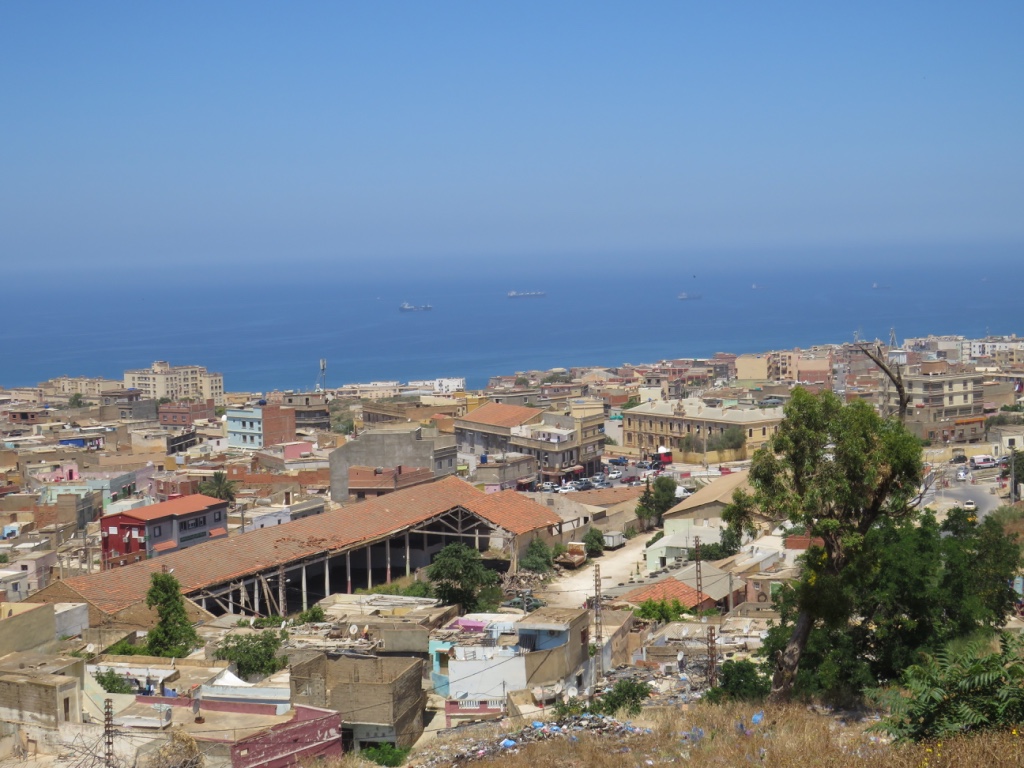
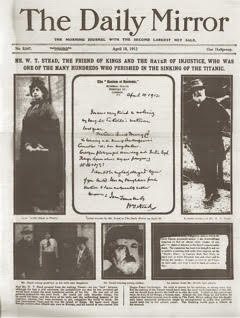
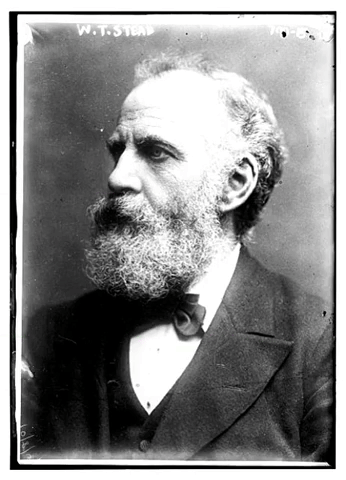

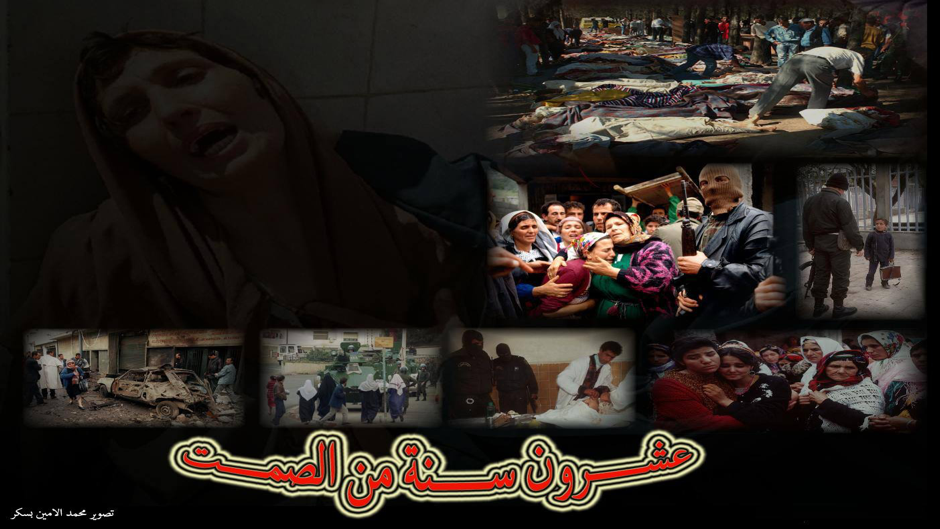
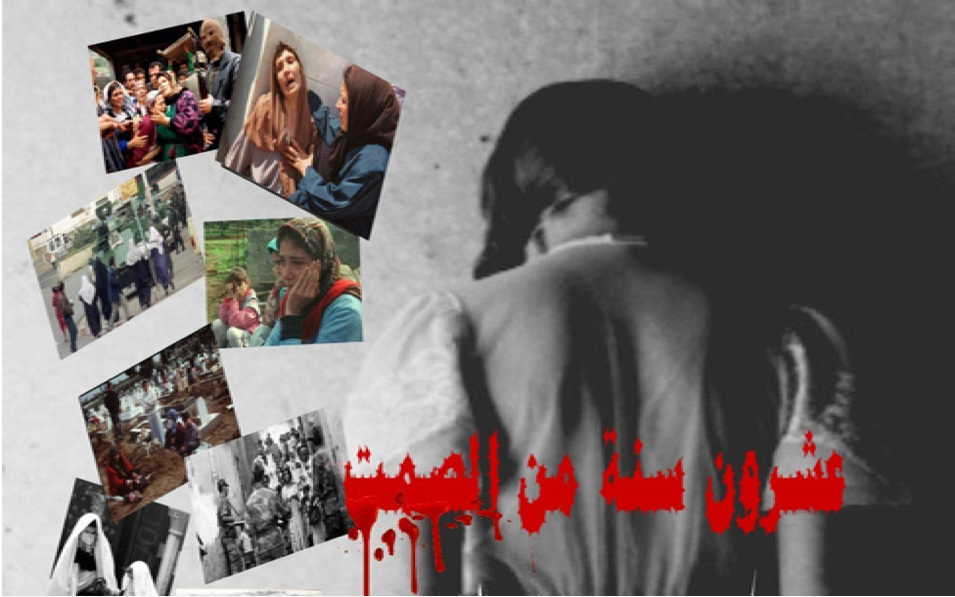

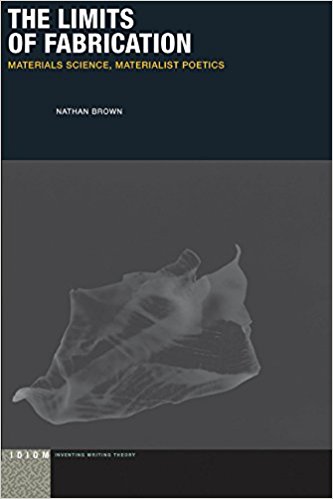 If there is a million dollar question in contemporary theory, it is that of materialism. To declare oneself a materialist remains an attractive proposition, and this despite the tangled confusions that have attended the term since the Ancients. There is something dashing about its implications, although any core definition, even any vaguely related set of appropriate objects or applications, remains stubbornly elusive. Materialism, especially in our flighty anxious present, promises something hard-edged, impatient of airy abstractions – the irony being, of course, that this most apparently earthy of terms seems able only to generate ever more windy attempts to pin it down. Historically, it is most often defined according to what it is not, and this is appropriate enough. There has always been something suspiciously thrusting, positive and hubristic about the idealisms, with their over-eager willingness to propose and impose system upon system, and the various materialisms have most often taken shape in flinty opposition to just such empire building.
If there is a million dollar question in contemporary theory, it is that of materialism. To declare oneself a materialist remains an attractive proposition, and this despite the tangled confusions that have attended the term since the Ancients. There is something dashing about its implications, although any core definition, even any vaguely related set of appropriate objects or applications, remains stubbornly elusive. Materialism, especially in our flighty anxious present, promises something hard-edged, impatient of airy abstractions – the irony being, of course, that this most apparently earthy of terms seems able only to generate ever more windy attempts to pin it down. Historically, it is most often defined according to what it is not, and this is appropriate enough. There has always been something suspiciously thrusting, positive and hubristic about the idealisms, with their over-eager willingness to propose and impose system upon system, and the various materialisms have most often taken shape in flinty opposition to just such empire building.

